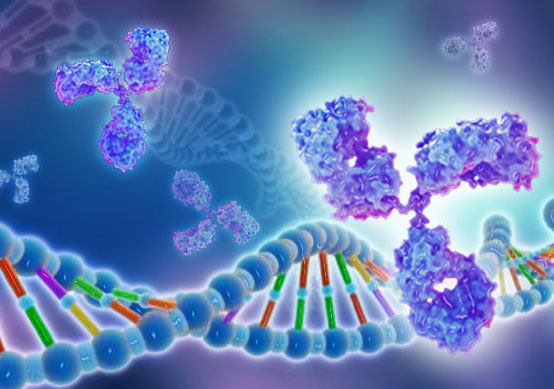Mouse EphA6 / EHK-2 Recombinant Protein (Fc Tag)(Discontinued)
Shipping Info:
For estimated delivery dates, please contact us at [email protected]
| Amount : | 200 µg |
| Purification : | > 90 % as determined by SDS-PAGE |
| Content : | Formulation Lyophilized from sterile PBS, pH 7.4 Normally 5 % - 8 % trehalose, mannitol and 0.01% Tween80 are added as protectants before lyophilization. |
| Storage condition : | Store it under sterile conditions at -20°C to -80°C. It is recommended that the protein be aliquoted for optimal storage. Avoid repeated freeze-thaw cycles. |
| AA sequence : | Met1-Gln546 |
| Alternative Name : | Ehk2 Protein, Mouse; Hek12 Protein, Mouse; m-ehk2 Protein, Mouse |
Source : HEK293 Cells
Ephrin type-A receptor 6, also known as EphA6 or EHK2, belongs to the ephrin receptor subfamily of the protein-tyrosine kinase family which 16 known receptors (14 found in mammals) are involved: EPHA1, EPHA2, EPHA3, EPHA4, EPHA5, EPHA6, EPHA7, EPHA8, EPHA9, EPHA1, EPHB1, EPHB2, EPHB3, EPHB4, EPHB5, EPHB6. The Eph family of receptor tyrosine kinases (comprising EphA and EphB receptors) has been implicated in synapse formation and the regulation of synaptic function and plasticity6. Eph receptor-mediated signaling, which is triggered by ephrins7, probably modifies the properties of synapses during synaptic activation and remodeling. Ephrin receptors are components of cell signalling pathways involved in animal growth and development, forming the largest sub-family of receptor tyrosine kinases (RTKs). Ligand-mediated activation of Ephs induce various important downstream effects and Eph receptors have been studied for their potential roles in the development of cancer. In the vomeronasal system, Ephrin-A5/EphA6 interactions mediate attraction or adhesion rather than repulsion.
Ephrin type-A receptor 6, also known as EphA6 or EHK2, belongs to the ephrin receptor subfamily of the protein-tyrosine kinase family which 16 known receptors (14 found in mammals) are involved: EPHA1, EPHA2, EPHA3, EPHA4, EPHA5, EPHA6, EPHA7, EPHA8, EPHA9, EPHA1, EPHB1, EPHB2, EPHB3, EPHB4, EPHB5, EPHB6. The Eph family of receptor tyrosine kinases (comprising EphA and EphB receptors) has been implicated in synapse formation and the regulation of synaptic function and plasticity6. Eph receptor-mediated signaling, which is triggered by ephrins7, probably modifies the properties of synapses during synaptic activation and remodeling. Ephrin receptors are components of cell signalling pathways involved in animal growth and development, forming the largest sub-family of receptor tyrosine kinases (RTKs). Ligand-mediated activation of Ephs induce various important downstream effects and Eph receptors have been studied for their potential roles in the development of cancer. In the vomeronasal system, Ephrin-A5/EphA6 interactions mediate attraction or adhesion rather than repulsion.
Measured by its binding ability in a functional ELISA . Immobilized mouse EphrinA3 at 1 µg/ml (100 µL/well) can bind mouse EPHA6 / chimera with a linear ranger of 6.25-400 ng/ml.
Endotoxin :< 1.0 EU per µg of the protein as determined by the LAL method
For Research Use Only. Not for use in diagnostic/therapeutics procedures.
|
There are currently no product reviews
|




















.png)









